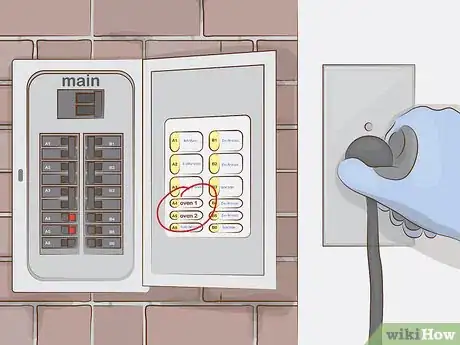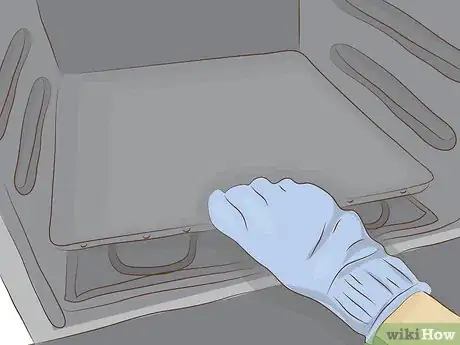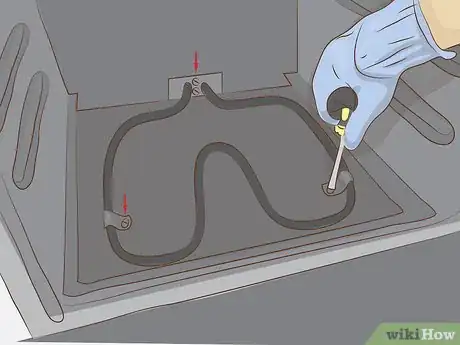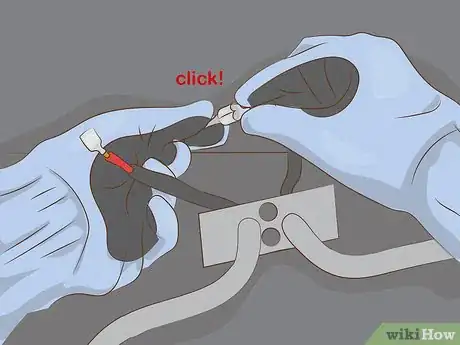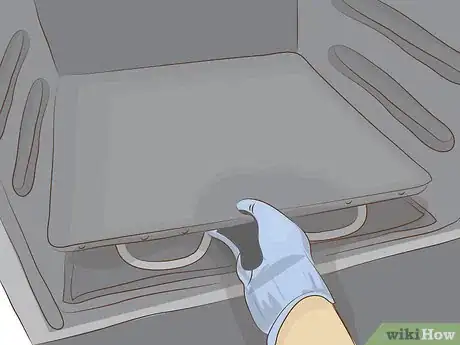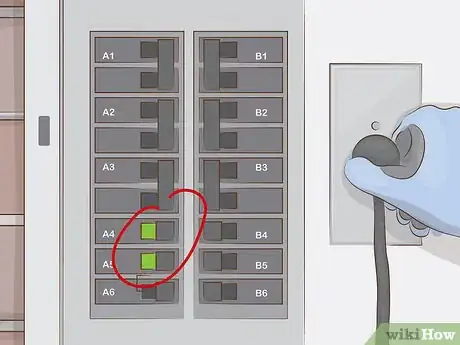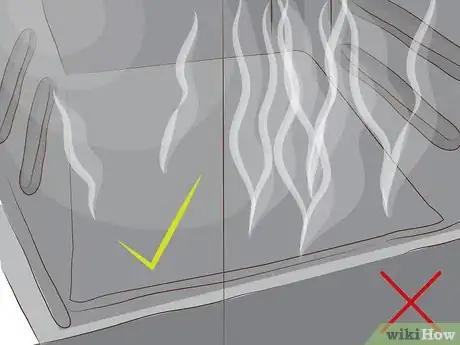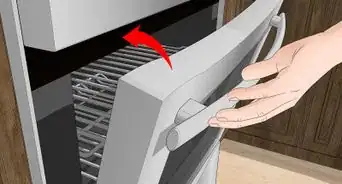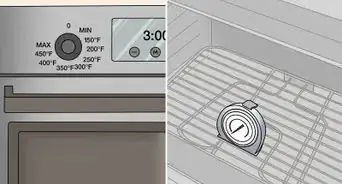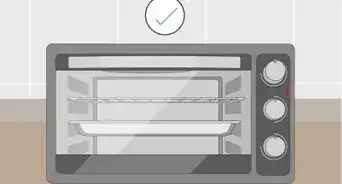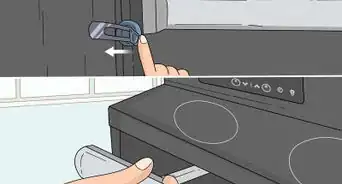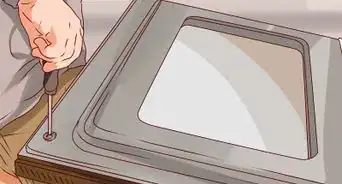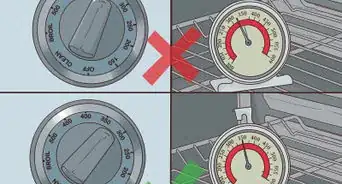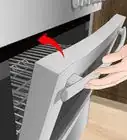This article was co-authored by Homer Flores. Homer Flores is an Appliance Repair Specialist and Training Manager at PreFix, a home maintenance company out of Austin, Texas. With over 15 years of experience, Homer specializes in home improvement, remodeling, and construction. Homer’s dedication to the PreFix mission of providing hassle-free one-stop-shop service for home care, in addition to their completion of the Capital Factory and Techstars Accelerators, has contributed to their growth of service to over 50 zip codes throughout the greater Austin area.
There are 8 references cited in this article, which can be found at the bottom of the page.
wikiHow marks an article as reader-approved once it receives enough positive feedback. In this case, several readers have written to tell us that this article was helpful to them, earning it our reader-approved status.
This article has been viewed 127,757 times.
If your oven isn't warming up the way it should, the problem might be a bad heating element. Replacing a faulty element isn't hard, but it can be a little tricky to manipulate some of the smaller parts within the tight confines of the oven. First, shut off the power to the oven at your home's main breaker to ensure that you're working safely. Then, identify and detach the old element. The new element will attach in the same fashion as the old one. Once you're done, you can switch the power back on and give the oven a trial run.
Steps
Removing the Old Element
-
1Turn off the power to the oven. Before you change out the defective element, you'll need to temporarily disable the electricity flowing to it.[1] Head to your home's main circuit breaker and find the switch corresponding to the oven. Flip it to the “Off” position to disable the power. You may find 2 individual breakers, 1 for each of the 120-volt fuses that powers the oven. If this is the case, be sure to shut off both breakers.[2]
- If there's not a separate breaker for the oven itself, you may have to flip the breaker for the whole kitchen.
- Unplug the oven from the wall as well, just to be on the safe side.[3]
-
2Remove the base panel covering the heating element. Some ovens have flat metal covers at the bottom that are designed to keep the lower baking elements out of sight. To remove 1 of these covers, feel for the grooved lip on the front edge and pull up on it sharply. Then, lift the panel away from its slot.[4]
- If you don't see the curving wire element when you open the oven door, there's a good chance it's being concealed by a cover.
- Not all base panels have raised lips. It may be necessary to first push down on one corner of the panel in order to lift the opposite corner enough to grip.
Advertisement -
3Unscrew the element at the front and back. Loosen and extract the screws at each of the connection sites with a flathead screwdriver. Most heating elements have 2 screws on the front side and 2 more along the back, connecting the piece to the rear wall of the oven.[5]
- If the element in your oven is fastened with bolts instead of standard screws, you can strip them using a 1⁄4 inch (0.64 cm) nut driver tool.[6]
- Set the screws aside in one place to avoid losing them. It may help to place them in a small dish to keep them together.
-
4Detach the wires running to the element. Pull the loose element a few inches away from the rear wall to create a comfortable amount of space. Use a pair of needle-nosed pliers to gently pull the 2 colored wires away from the terminals on the backside of the element. Pay attention to how the wires are configured so you'll be able to easily reconnect them once you've installed the new element.[7]
- Be careful not let the wires slip through the holes in the back of the oven, or you'll have no choice but to pull the entire unit out to thread them back through.[8] It may help to tape them to the interior wall.
- Heating element wires are sometimes secured with small male-female spade connectors, or a thin, interlocking metal slot and insert. These can usually be separated with a quick pinch of your pliers.[9]
Installing the New Element
-
1Identify the make and model of the old element. You should be able to make out a brand name, model number, or serial code indicating the part's manufacturer on one of the element's broad metal faces. You'll need to refer to this information when shopping for a new part to make sure you get 1 that's a match.[10]
- Jot down any identifying info on the element before disposing of it. This will be easier than taking it to the hardware store with you.
- If you're unable to find the exact model you need in stores, try ordering a replacement online.
-
2Fit the new element into the oven. Position the element over the bottom surface, making sure it's arranged with the metal screw plates down and the terminals facing the rear of the oven. Take a moment to double check that the screw holes on the element line up with those on the oven.
- Convection elements need to go on the top of the oven, but will install the same otherwise.[11]
-
3Reconnect the terminal wires. Grab your pliers again and guide the ends of the wires into the terminals on the backside of the element. If there are male-female connectors on the ends of the wires, you should hear them click when they're firmly in place. Once the wires are secure, slide the element back until it rests flush against the rear wall of the oven.[12]
- Make sure that each wire is running to the correct terminal. This shouldn't be too difficult, as most ovens only have 2, and they're typically spaced in such a way that they end just in front of their corresponding connection sites. Getting the wires crossed might result in a short, which could become a fire hazard.
- Keep a loose grip with the pliers to avoid damaging the delicate ends of the wires.
-
4Screw down the element. Insert the screws into the metal plates on the bottom of the element, 2 in the front and 2 in the back. Tighten them with your screwdriver or nut driver tool until they stop turning. Give the element a gentle shake to feel for loose connections.[13]
- Use a 1⁄4 inch (0.64 cm) nut driver tool if your element fastens with bolts instead of screws.
-
5Replace the base panel. If your oven features a separate cover, slip it back over the newly-installed element and press down until it lies flat. Secure any other screws or fasteners before restoring power to the oven.
- Gaps or raised corners could be a sign that the base panel has been put on slightly crooked.
Making Sure the Replacement Element Works Properly
-
1Restore power to the oven. Head back to the circuit breaker and flip the switch for the oven to the “On” position. Remember to hit both breakers if your oven operates on dual fuses. This will direct electricity back to the oven, so it's important to make sure you've finished making all necessary adjustments by this point.[14]
- Don't forget to plug the oven back in if you unplugged it earlier.
-
2Test the new heating element. Turn on the oven and set it to “bake” or “convection,” depending on which element you've replaced, and give it a few minutes to warm up. Hold one hand up a safe distance away from the element. It shouldn't take long for it to begin radiating heat.
- An active heating element will typically glow red when it's nice and hot.[15]
- Try upping the heat setting gradually to see how well the new element handles higher temperatures.
- If your oven still feels cool after replacing a suspect heating element, there may be something wrong with the wiring. Call a qualified electrician and have them diagnose and repair the problem.
-
3Watch for smoking. Don't be alarmed if you see a few wisps of smoke escaping from the oven as it heats up—this is just the protective factory coating burning off the outside of the new element. It's nothing to worry about, but it is recommended that you hold off on cooking anything for about half an hour after installing the new element.[16]
- You may also notice a faint acrid odor.
- Heavy or continuous smoke could mean that one of the oven's components has caught fire. If the smoking doesn't stop after a few minutes, contact your local fire department.[17]
Community Q&A
-
QuestionHow long does it take to change an oven element?
 Community AnswerI've just done mine for the second time. Changing the element took 10-15 minutes.
Community AnswerI've just done mine for the second time. Changing the element took 10-15 minutes. -
QuestionHow do I remove the hidden element if the bottom base has no screws and the bottom attached to sides and top are all one piece?
 Community AnswerUnfortunately, you will need to remove the back, side, and top of the oven. This is the case with the GE profile.
Community AnswerUnfortunately, you will need to remove the back, side, and top of the oven. This is the case with the GE profile.
Warnings
- Anytime you're working in or around a live oven, there's a risk of heat or electricity-related injury. Always take the proper safety precautions to avoid unnecessary mishaps.⧼thumbs_response⧽
Things You'll Need
- Oven heating element
- Flathead screwdriver
- 1⁄4 inch (0.64 cm) nut driver tool
- Flashlight (optional)
References
- ↑ Homer Flores. Appliance Repair Specialist. Expert Interview. 14 April 2021.
- ↑ https://www.searspartsdirect.com/repair-guide/wall-oven/how-to-replace-an-electric-oven-bake-element.html
- ↑ https://www.lowes.com/n/how-to/replace-an-oven-element
- ↑ https://www.searspartsdirect.com/repair-guide/wall-oven/how-to-replace-an-electric-oven-bake-element.html
- ↑ http://www.appliance411.com/faq/replace-oven-element.shtml
- ↑ https://www.searspartsdirect.com/repair-guide/wall-oven/how-to-replace-an-electric-oven-bake-element.html
- ↑ https://homesteady.com/how-5564765-replace-ge-oven-element.html
- ↑ Homer Flores. Appliance Repair Specialist. Expert Interview. 14 April 2021.
- ↑ http://www.appliance411.com/faq/replace-oven-element.shtml
- ↑ https://www.lowes.com/n/how-to/replace-an-oven-element
- ↑ http://ovens.reviewed.com/features/convection-cooking-101-a-guide-to-cooking-baking-with-fans
- ↑ https://homesteady.com/how-5564765-replace-ge-oven-element.html
- ↑ https://www.lowes.com/n/how-to/replace-an-oven-element
- ↑ https://www.searspartsdirect.com/repair-guide/wall-oven/how-to-replace-an-electric-oven-bake-element.html
- ↑ http://www.acmehowto.com/howto/appliance/range/electric/check/oven-element.php
- ↑ https://www.lowes.com/n/how-to/replace-an-oven-element
- ↑ http://www.preventfire.com/adults/oven-and-stove-top-safety.html
About This Article
If your oven isn’t warming up properly, the issue might be a bad heating element. Replacing a broken element isn’t too complicated, but it can be tricky working in such a small space. Before you begin, you’ll need to turn the power off to your oven. Then, take out the old element by unscrewing it and detaching the wires running into it. Find the brand name, model number, or serial code on the old element to make sure you buy the proper replacement. Fit the new element over the bottom surface, reconnect the terminal wires, and screw down the element. To learn how to make sure the replacement element works properly, keep reading!
